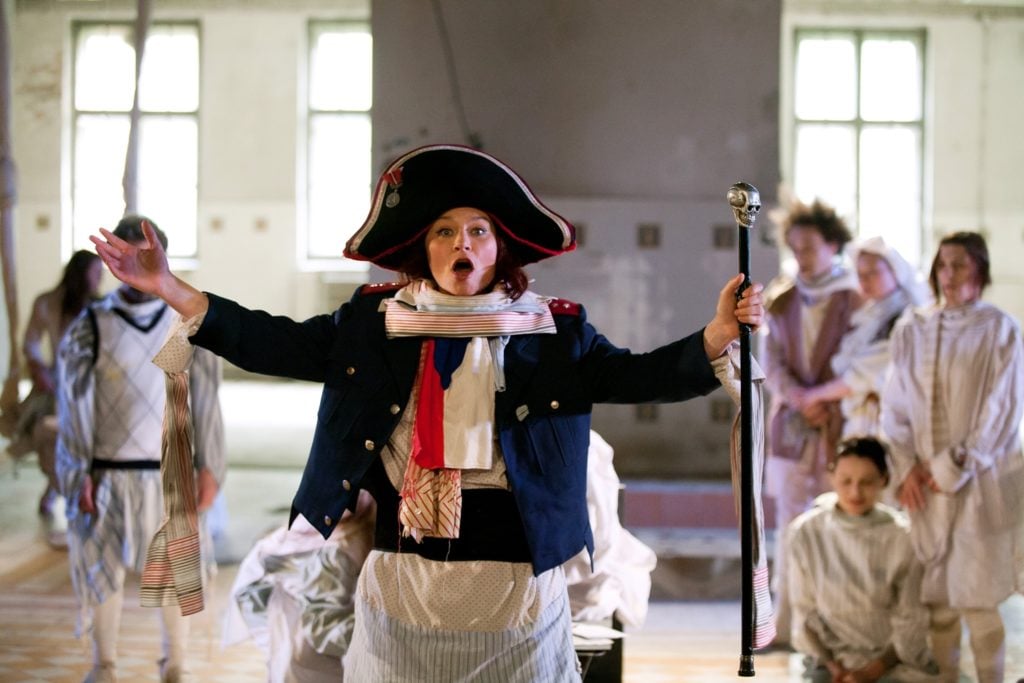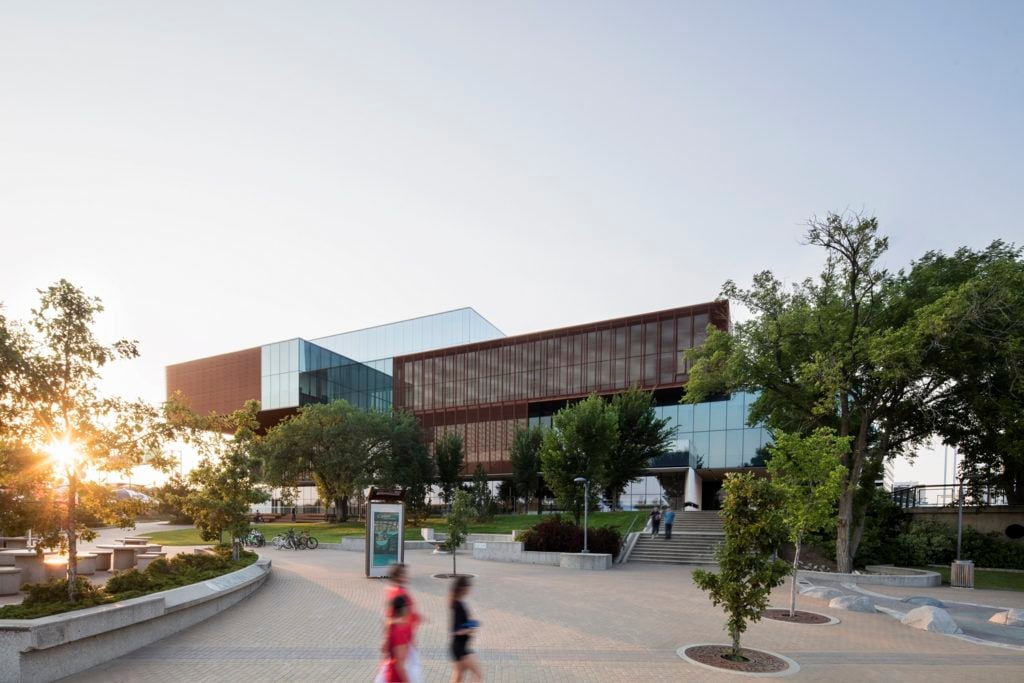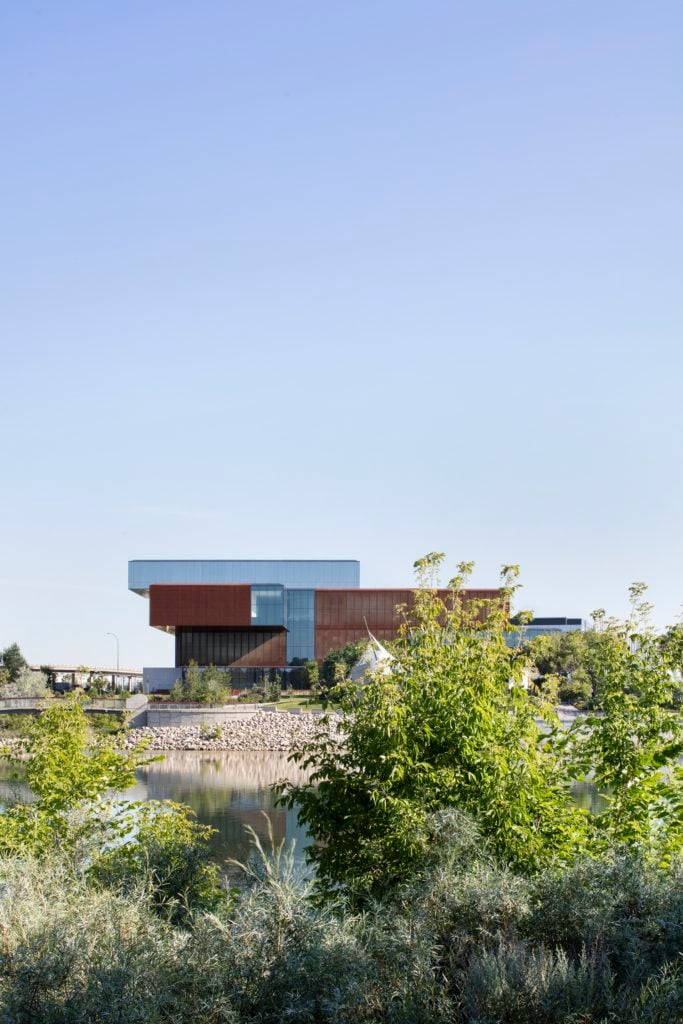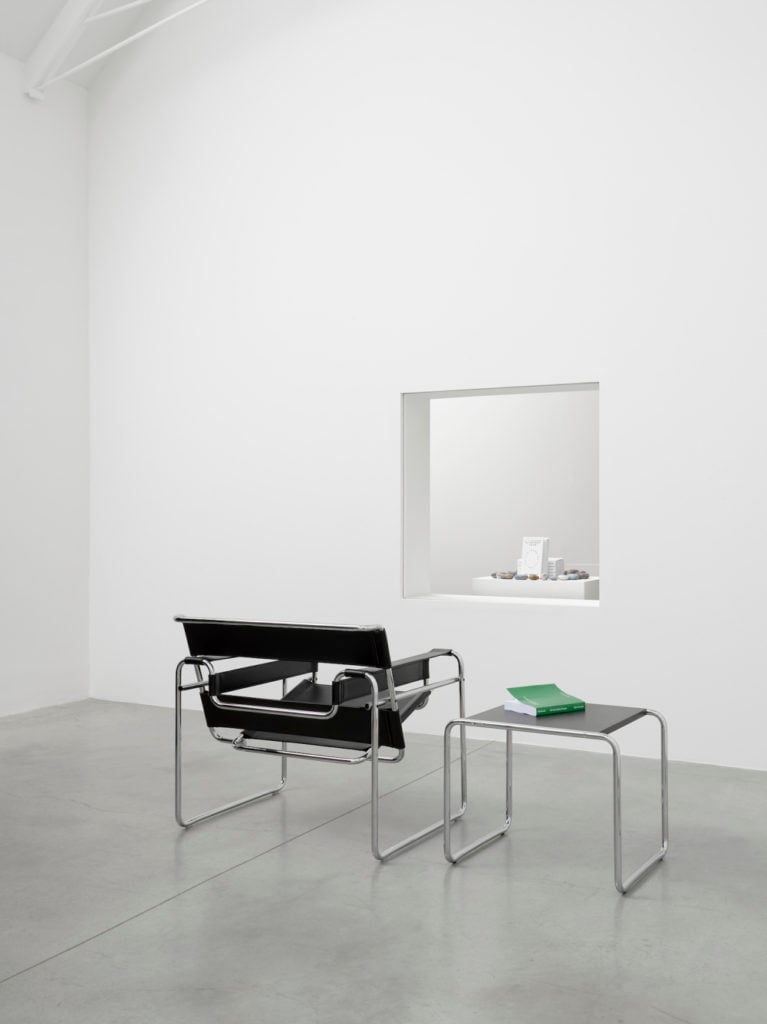On View
With Remai Modern, Canada Gets a Cutting-Edge New Museum—and It’s Got Cash to Burn
The spectacular Saskatoon institution debuted this weekend.

The spectacular Saskatoon institution debuted this weekend.

Eileen Kinsella

Canada’s much-anticipated museum, Remai Modern, opened with considerable fanfare this past weekend on the banks of the South Saskatchewan River, welcoming an estimated crowd of 9,000 visitors for the fully subscribed (and temporarily free) launch weekend.
This wasn’t even the flashiest gesture to mark the grand opening. Two days earlier, major funder and museum namesake Ellen Remai announced a fresh gift that brought her foundation’s total pledged contribution to C$103 million ($81 million). Further, the Remai foundation announced it would give C$1 million a year for acquisitions for the next 25 years, and further offered to match eligible donations up to a maximum of C$1 million each year.
Following a civic ceremony on October 21 outside the 130,000-square foot, four-story building, visitors enjoyed traditional Indigenous and Métis performances, and the first look at the inaugural exhibition “Field Guide,” which features an eclectic mix of local, Canadian, and international stars. (Métis refers to a person of mixed American Indian and Euro-American ancestry.)
In what is perhaps a novel approach for a modern and contemporary institution, the museum is heavily, though not singularly, focused on the sizable community of Indigenous people and, by extension, artists in the region. “I think the population is about 12 percent Indigenous, or Métis,” says executive director and CEO Gregory Burke. “We’re a new museum from the ground up. We’ve asked ourselves many questions about what a museum can and should do. I think one of the things that we must do is to address the impact of colonization and to respond to the fact that quite a large percentage of the population is Indigenous.”

Exterior view of Remai Modern, seen from the adjacent Meewasin Valley Trail in Saskatoon. Photo by Adrien Williams.
While Remai Modern will not generally show traditional works by Indigenous artists, says Burke, “we can certainly respond to what is quite a vital moment in terms of contemporary Indigenous art here in Canada and also internationally.”
The show also features artists from a wide range of Indigenous backgrounds, notes Burke, including Paulo Nazareth, a South American artist both of indigenous Southern American and African descent (seen in the recent SITE Santa Fe biennial), as well as Luke Willis Thompson, who is originally from Fiji, but was raised in New Zealand (a veteran of the most recent New Museum Triennial).
At the same time, “Field Guide” is leavened with a variety of international heavyweights: Vancouver-based artist Stan Douglas; French artist Pierre Huyghe; German artist Hito Steyerl; and California artist Pae White.
South Korean artist Hague Yang has large sculptures hanging in the atrium that reference Sol LeWitt’s open cube structures. Huyghe is present via a neon work that blares the words “I don’t own 4:33,” a reference to famed composer John Cage’s all-silent composition.
Burke happily reported that the museum has also already acquired some of the major works in the “Field Guide” exhibition, thanks in part to the new $1 million annual acquisitions initiative. These include Stan Douglas’s The Secret Agent, which Burke called the artist’s “most ambitious video installation to date.”

Remai Modern in Saskatoon, Canada. Photo by Adrien Williams.
Overall, the Remai Modern unites two major collections that do not necessarily appear connected or even complementary: that of the former Mandel Gallery in Saskatoon, which closed in 2015 and whose heavily regional art collection dates back to the start of the 20th century; and a recent gift from Ellen Remai, of 400 Picasso linocut portraits.
A second aspect of the newly opened institution’s inaugural program comes from Gander, who selected more than 120 of the Picasso linocuts to hang in the gallery. Though he admitted to a local paper that he did not even know where Saskatoon was when first approached by the museum, he told the museum that he had almost cried when he saw the assembled Picassos together, calling the trove “phenomenal.”
In addition, Gander was inspired to copy every single linocut as a drawing, with the results forming the museum’s first art book.

Ryan Gander, Fieldwork 2015, 2015, multimedia installation, dimensions variable. Remai Modern Collection.
In a further twist, Gander’s work as curator and copyist was incorporated into his installation that was included in the inaugural showcase, “Field Work.” That work consists of some 33 items on a conveyor belt that visitors see one at a time as they roll past a window (a similar version was shown at Lisson Gallery’s New York branch in Chelsea last fall; it has been acquired by the Remai). The procession of personal effects is intended to function as a self-portrait of sorts.
Incidentally, Gander’s conveyor belt work previously had 32 objects, but the artist added the final 33rd one for this show—the stack of Gander’s own Picasso-inspired drawings for Remai Modern, shown with a spike driven through them. “He’s playing with a lot of things,” says Burke. The new museum, it seems, is already generating new types of conversations.